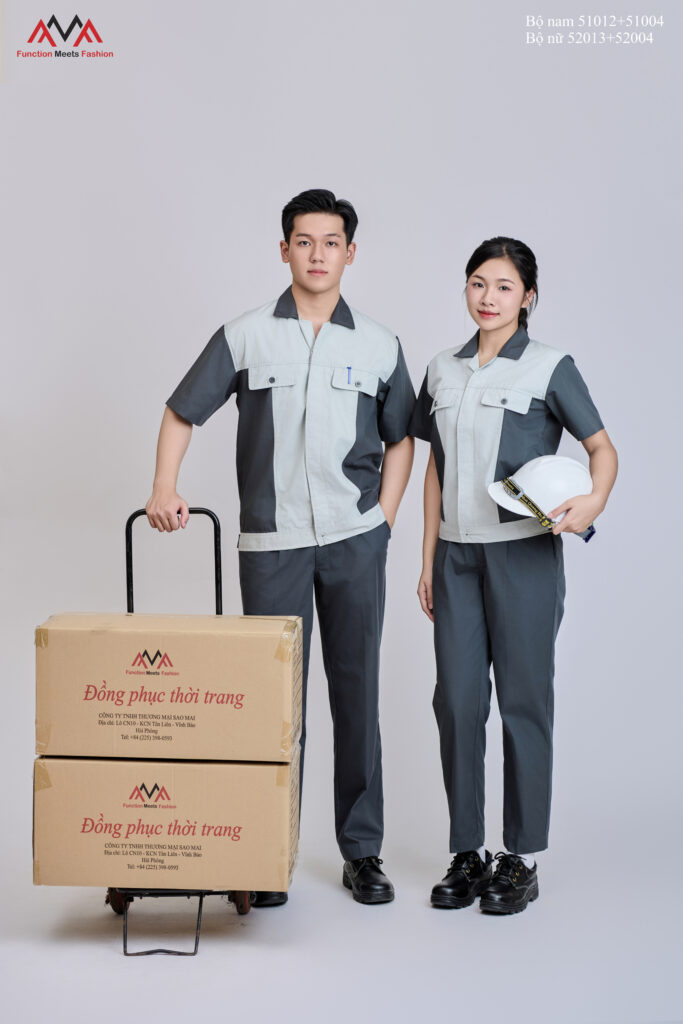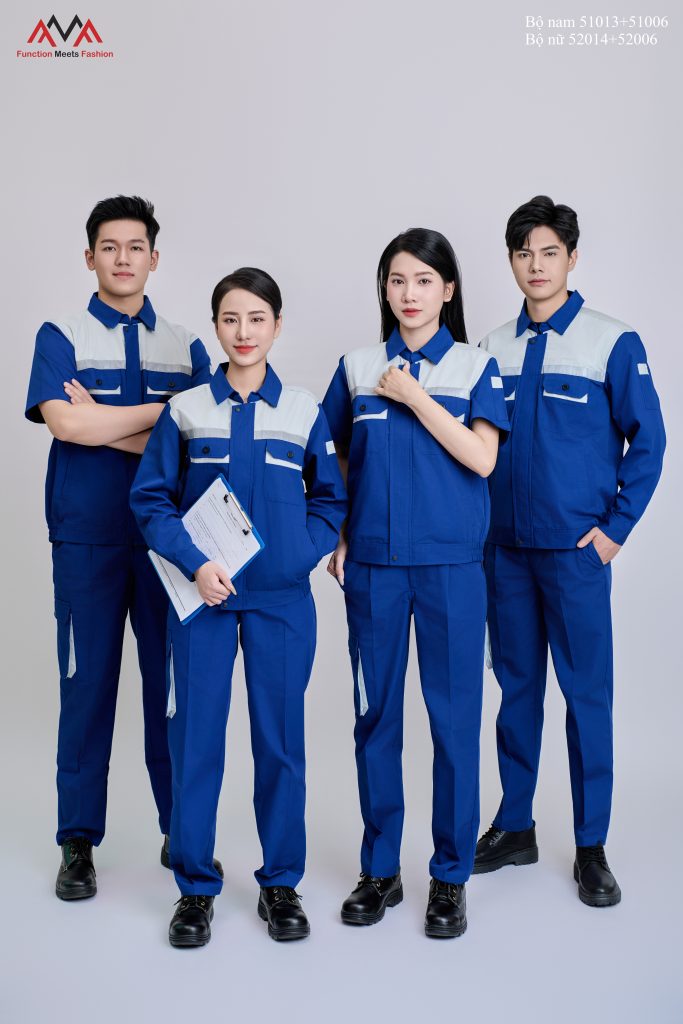How to Choose Safe Workwear That Suits Your Work Environment? Choosing the right protective workwear for a specific work environment is crucial for ensuring safety and health for employees. Depending on the nature of the job and the environment, selecting appropriate protective gear not only safeguards workers but also boosts productivity and work efficiency. This article provides useful insights to help you make the best choice.
Why Should You Choose Safe and Suitable Workwear?

Protecting Health and Lives
Every work environment carries unique risks, such as exposure to toxic chemicals, high temperatures, explosion hazards, or mechanical injuries. Proper protective gear minimizes the risk of injuries and long-term health impacts.
Compliance with Legal Requirements
In Vietnam, workplace safety regulations are clearly outlined in the Law on Occupational Safety and Hygiene. Employers must not only provide protective gear for workers but also ensure that it meets quality standards.
Enhancing Work Efficiency
Employees can work more effectively when equipped with suitable protective gear, giving them a sense of comfort and security.
You May Be Interested In: FMF Workwear Uniforms
1. Why Is Proper Workwear Important?

Construction Environments
Construction sites pose significant risks, including falling objects, dust, and mechanical impacts. Therefore, essential equipment includes:
- Safety helmets: To protect against impacts and falling objects.
- Protective footwear: With puncture-resistant soles and anti-slip features.
- Protective gloves: Durable and slip-resistant, protecting the hands.
- Goggles and masks: To shield the eyes and respiratory system from dust and flying debris.
Heavy Industry Environments
In industries like metallurgy, mechanical engineering, or manufacturing, exposure to high temperatures, sparks, or chemicals is common. Appropriate protective gear includes:
- Heat-resistant clothing: Made from flame-retardant materials.
- Thermal gloves: For handling hot objects.
- Shielding goggles: To block UV rays or welding sparks.
- Gas masks: To protect against toxic chemicals or gases.
Healthcare and Laboratory Environments
In these fields, workers face risks from infectious bacteria, viruses, or hazardous chemicals. Necessary protective gear includes:
- Chemical-resistant clothing: Made from waterproof or antibacterial materials.
- Nitrile or latex gloves: For hygiene and protection from direct chemical contact.
- Safety goggles: To protect the eyes from splashes or toxic gases.
- Anti-slip shoes: To ensure safety in wet environments.
Outdoor Work Environments

Workers such as farmers, electrical technicians, or traffic staff require:
- Reflective vests: For high visibility in low-light conditions.
- Sun hats: To shield against direct sunlight.
- Thermal clothing: To keep warm when working in cold environments.
2. Criteria for Choosing Protective Workwear
Quality Standards
Protective gear must adhere to safety standards, such as ISO 9001, TCVN, or other international certifications. Avoid purchasing products with unclear origins, as they may not provide adequate protection.
Suitability for Users
Workwear must fit properly—not too tight or too loose—to ensure comfort and flexibility. Always test products before making bulk purchases.
Durability
Choose equipment made from robust materials that can withstand harsh working conditions.
Cost-effectiveness
While cost is a factor, avoid skimping on quality, as subpar products can jeopardize safety during work.
3. Tips for Using Protective Workwear

- Regular Inspections: Ensure that all equipment is in good condition and has not deteriorated or lost its protective capabilities.
- Proper Training: Workers should be taught how to use protective gear correctly.
- Appropriate Storage: Store gear in dry places, away from direct sunlight or damp environments.
Conclusion
Choosing protective workwear that fits the work environment is not just a responsibility—it demonstrates care for workers’ well-being. When employees are well-equipped, they feel more secure, leading to improved efficiency and work quality.
Always prioritize safety and don’t hesitate to invest in high-quality protective gear. A safe workplace is not just a place to work but a foundation for sustainable growth for both businesses and employees.
You may be interested in: FMF Black-Red Short-Sleeve Workwear Uniform.






 Tiếng Việt
Tiếng Việt

Sản phẩm
Red And Black Short-Sleeve Workwear Set
Red And Black Long-Sleeve Workwear Set
Blue And Grey Short-sleeve workwear set
BLUE+GREY LONG-SLEEVED WORKSUIT
CHARCOAL+GREY SHORT-SLEEVED WORKWEAR
CHARCOAL+GREY LONG-SLEEVED WORKWEAR
SHORT-SLEEVED REFLECTIVE GRAY WORKSUIT
LONG-SLEEVED REFLECTIVE GRAY WORKSUIT
GREY COORDINATE LONG-SLEEVED NAVY
NAVY POLO JERSEY
POLO BLUE+NAVY JERSEYS FOR MEN AND WOMEN
POLO JERSEY NAVY+WHITE MEN’S/WOMEN’S